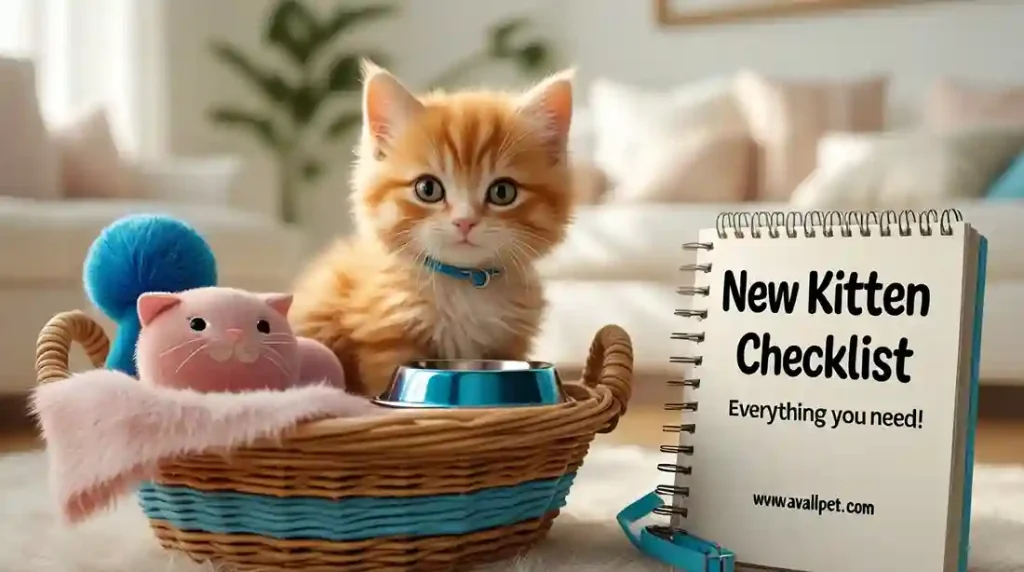🔑 Key Takeaways: Best Cat Breeds for Apartments
- Top Picks: British Shorthair, Russian Blue, Ragdoll, Scottish Fold, Persian, Chartreux, Exotic Shorthair.
- Key Traits: Look for quiet, low-energy cats that are adaptable.
- Avoid: Highly vocal or extremely active breeds that need lots of space.
- Pro Tip: Even calm cats need vertical space and daily playtime.
Introduction: Finding a Feline Friend for Your Urban Home
Living in an apartment doesn’t mean you have to miss out on the joy of cat ownership. In fact, choosing a feline companion well-suited to a cozier environment can lead to an incredibly harmonious relationship. The key isn’t the square footage—it’s selecting one of the best cat breeds for apartments whose innate personality thrives without a large territory to patrol.
This guide, informed by veterinary behavioral insights, profiles the perfect feline roommates. We’ve evaluated breeds based on essential criteria like noise level, energy, and independence to help you find a low-energy cat that will be content and happy in your urban home.
What Makes a Cat a Good Fit for an Apartment?
Before we dive into our top picks, it’s important to understand what actually makes a cat well-suited for apartment life. While any cat can adapt, certain inherent traits make the transition smoother and ensure your feline friend is truly content in a smaller space.
When evaluating the best cat breeds for apartments, we focused on these key characteristics:
- Low to Moderate Energy Level: High-energy breeds that need constant running space may become frustrated or destructive in a confined area. We prioritized cats with a more relaxed, calm demeanor.
- Quiet Vocalization: In apartments with shared walls, a frequently yowling or demanding cat can create issues with neighbors. Quieter breeds are generally better neighbors.
- Adaptable Nature: The ability to adjust to smaller spaces, potentially limited window views, and the sounds of a bustling building is crucial for an urban cat’s happiness.
- Independent Streak: While affectionate, the ideal apartment cat should be content to entertain themselves while you’re at work or busy, without developing separation anxiety.
Understanding these traits will help you see why the following breeds excel as good apartment cats and make your selection process much easier.
The 7 Best Cat Breeds for Apartments Living
Here are our top picks for feline companions who will thrive in your apartment, based on their temperament, energy levels, and adaptability to smaller spaces.
1. British Shorthair
At a Glance: Quiet | Low Energy | Independent | Perfect for: Busy professionals and quiet households
The British Shorthair is arguably the perfect apartment cat. These calm, dignified cats are true couch potatoes who enjoy quiet companionship but aren’t needy. Their plush coat requires only weekly brushing, and their undemanding nature makes them ideal for smaller living spaces.
2. Russian Blue
At a Glance: Reserved | Quiet | Gentle | Perfect for: Peaceful homes and first-time owners
Russian Blues are known for their quiet, gentle nature. They form deep bonds with their families but tend to be reserved around strangers, making them well-suited for the controlled environment of an apartment. Their short, dense coat sheds minimally and requires little maintenance.
3. Ragdoll
At a Glance: Gentle | Quiet | Adaptable | Perfect for: Families and singles wanting a loyal companion
While larger than typical cats, Ragdolls have famously relaxed personalities. They’re known for going limp when held and tend to be very quiet. Their calm demeanor and adaptability make them excellent for apartment living, provided they have enough soft surfaces for their large size.
4. Scottish Fold
At a Glance: Adaptable | Sweet-Natured | Quiet | Perfect for: Various living situations and families
The distinctive Scottish Fold wins hearts with its unique folded ears and sweet expression. These cats are highly adaptable to different environments, including apartments. They’re typically quiet and enjoy being near their humans without being overly demanding.
5. Persian
At a Glance: Serene | Sedentary | Quiet | Perfect for: Calm households with grooming time
Persians are the epitome of a low-energy indoor cat. These serene felines prefer lounging in comfort and rarely engage in high-energy antics. While their beautiful coat requires daily grooming, their quiet nature and sedentary lifestyle make them excellent apartment dwellers.
6. Chartreux
At a Glance: Quiet | Undemanding | Adaptable | Perfect for: Quiet companionship and easy care
The Chartreux is a quiet, undemanding breed that adapts well to apartment life. Known for their “smile” and quiet chirp instead of loud meows, these cats are content with peaceful coexistence and require minimal grooming despite their plush blue coat.
7. Exotic Shorthair
At a Glance: Calm | Playful | Low Maintenance | Perfect for: Persian lovers with less grooming time
The Exotic Shorthair offers the same calm, sweet temperament as the Persian but with a much more manageable short, plush coat. These quiet, adaptable cats are perfectly happy in apartments and bring just enough playful energy to keep things interesting without being destructive.
Essential Tips for Apartment Cat Owners
Creating the perfect environment is just as important as choosing the right breed. Here are essential tips to ensure your apartment cat remains happy, healthy, and well-behaved in your smaller space.
Create Vertical Territory
Since floor space is limited in apartments, think vertically. Cats naturally feel more secure when they can survey their territory from above.
- Install wall-mounted cat shelves to create climbing pathways.
- Choose a stable, multi-level cat tree with scratching posts.
- Place perches near windows for bird-watching entertainment.
Establish a Consistent Routine
Cats thrive on predictability, especially in smaller spaces where they can’t escape disruptions.
- Feed your cat at the same times each day using an automatic pet feeder if your schedule varies.
- Schedule daily 10-15 minute play sessions to burn energy.
- Maintain consistent litter box cleaning times.
Provide Mental Stimulation
Boredom can lead to destructive behavior in confined spaces.
- Rotate interactive cat toys to maintain novelty.
- Use [puzzle feeders](Affiliate Link) to make mealtime engaging.
- Create hiding spots with cardboard cat caves or boxes.
- Consider cat grass growing kits for safe nibbling.
Optimize Litter Box Placement
In small apartments, litter box management is crucial.
- Use an enclosed litter box to contain odors and litter scatter.
- Place it in a quiet, low-traffic area away from food bowls.
- Try odor-absorbing litter specifically formulated for small spaces.
- Scoop daily and clean thoroughly weekly.
Manage Noise and Stress
Apartments come with shared walls and unexpected noises that can stress cats.
- Use a pheromone diffuser to create a calming environment.
- Provide hiding places where your cat can retreat if overwhelmed.
- Keep music or white noise at low volume to mask outside sounds.
FAQs About Best Cat Breeds for Apartments
Can a high-energy cat like a Bengal live in an apartment?
While possible, high-energy breeds like Bengals present challenges in apartments. They require extensive daily play sessions, massive cat trees, and plenty of interactive toys to prevent boredom and destructive behavior. They’re better suited for experienced owners who can meet their substantial exercise needs.
What is the quietest cat breed for an apartment?
The quietest cat breeds perfect for apartments include the Russian Blue, British Shorthair, and Chartreux. These breeds tend to be more reserved and communicate with gentle chirps rather than loud meows, making them ideal for homes with shared walls.
Are two cats better than one in an apartment?
Often, yes. Two cats can provide companionship and entertainment for each other, reducing separation anxiety and boredom. This is especially beneficial in smaller spaces. However, ensure you choose cats with compatible personalities and provide multiple resources (litter boxes, food bowls, sleeping areas) to prevent conflict.
How can I stop my apartment cat from meowing at night?
To curb nighttime meowing:
- Engage in vigorous play sessions before bedtime to tire them out.
- Provide a small, automatic timed feeder for a late-night snack.
- Ensure they have access to a clean litter box and fresh water.
- Ignore attention-seeking meows to avoid reinforcing the behavior.
Conclusion: Your Perfect Apartment Cat Awaits
Choosing one of the best cat breeds for apartments is the first step toward creating a harmonious living situation for both you and your feline friend. Remember that breeds like the British Shorthair, Russian Blue, and Ragdoll naturally possess the calm and adaptable temperaments that thrive in smaller spaces.
Success in apartment living goes beyond breed selection. By implementing our essential tips—creating vertical space, maintaining a consistent routine, and providing mental stimulation—you’ll ensure your cat remains content and well-adjusted. The right environment transforms even the smallest apartment into a perfect feline home.
Ready to find your match? Return to our comprehensive guide for more detailed comparisons: The Ultimate Guide to Choosing the Best Cat Breeds.
Recommended Sources for Fact-Checking:






